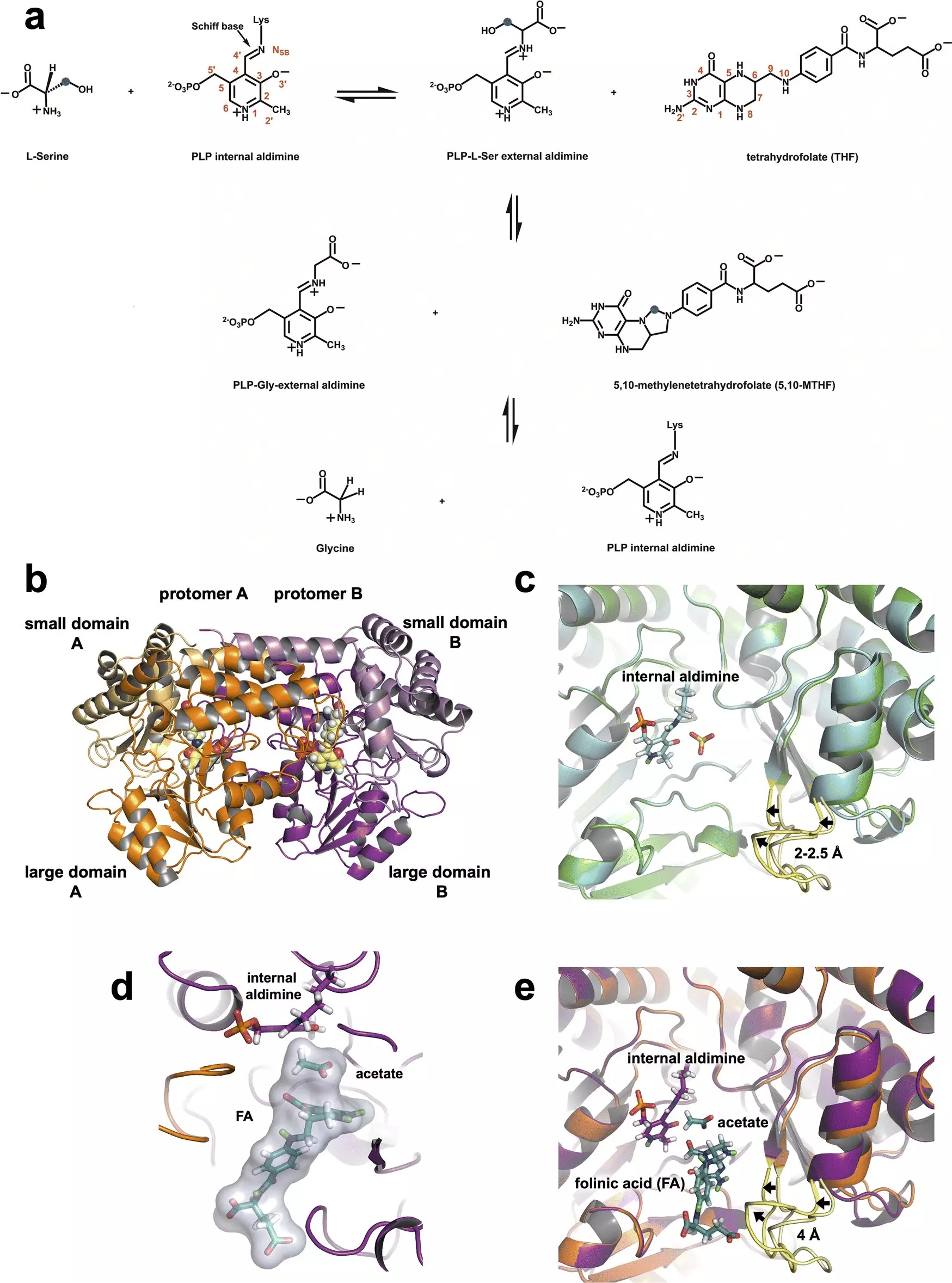Recent advancements in neutron research have provided unprecedented insight into the complex world of cancer biology, particularly regarding the enzyme serine hydroxymethyltransferase (SHMT). Researchers from the Department of Energy’s Oak Ridge National Laboratory (ORNL) capitalized on neutron scattering techniques at their Spallation Neutron Source and High Flux Isotope Reactor. By delving deep into atomic-scale details, scientists have illuminated vital aspects of SHMT’s structure and function that could significantly propel drug design for aggressive cancers. Given cancer’s affinity for commandeering metabolic pathways to fuel its proliferation, a better understanding of enzymes like SHMT is indispensable in developing effective therapeutic strategies.
Cancer cells exhibit a proclivity for hijacking metabolic pathways, transforming natural processes into relentless mechanisms for replication. SHMT plays a pivotal role in one-carbon metabolism, converting the amino acid serine into glycine while transferring carbon units to tetrahydrofolate—an essential reaction driving the synthesis of nucleic acids critical for cell division. Consequently, if researchers can design a potent inhibitor that targets SHMT’s function early within this pathway, they stand a chance to disrupt cancer’s tactics and potentially halt its rapid replication.
The publication of these groundbreaking findings in *Chemical Science* has generated excitement in the scientific community. Victoria Drago, ORNL’s lead biochemist, highlighted the unique capabilities of neutron diffraction in clarifying structural biology. Drago asserted that neutrons can offer insights into hydrogen positions, which are crucial to understanding enzyme dynamics and mechanisms, providing her team with a comprehensive view of SHMT’s operational blueprint.
Over the years, the specifics of SHMT’s catalytic mechanism remained contentious, mired in debate concerning the roles played by various amino acids. However, through neutron experimentation, the researchers identified that a particular glutamate residue—a vital component of SHMT’s active site—regulates its reactions. Remarkably, this glutamate retains a proton, which allows it to oscillate between acid and base functions, facilitating the essential chemical reactions that support cellular metabolism.
As team member Robert Phillips, a chemistry professor at the University of Georgia, noted, this discovery not only identifies the residue’s dual role but also informs how precisely enzymes conduct their catalytic activities. Such elucidation of SHMT’s mechanics opens up new avenues for therapeutic intervention, as inhibiting its function stands to interrupt the unchecked growth patterns typical of cancer cells.
The combination of neutron diffusion and other imaging techniques facilitated the capture of SHMT in varied states. Whereas traditional X-ray crystallography excels in visualizing heavier elements, neutron techniques shine by rendering lighter elements like hydrogen visible. This distinction proves critical, given that approximately half of an enzyme’s composition is hydrogen-based. The neutron data illuminated previously hidden details, informing the researchers about protonation states and electrostatics within SHMT’s active site, ultimately enabling precise inhibitor design.
Kovalevsky, another key author, emphasized how these molecular insights are pivotal for crafting small-molecule inhibitors that could bind to SHMT, potentially replacing tetrahydrofolate and halting the enzymatic processes that cancer cells exploit for growth.
The research underscores a significant shift in the approach to cancer treatment, where the focus must evolve towards targeting earlier stages in metabolic pathways. Compounds like methotrexate and fluorouracil have already positioned other enzymes within the one-carbon metabolic pathway as established targets. In contrast, SHMT’s critical placement offers a robust avenue for intervention, suggesting that timely targeting could result in more effective cancer therapies.
William Nelson, director of the Sidney Kimmel Comprehensive Cancer Center at Johns Hopkins, addressed the evolving landscape of drug discovery, hinting at an innovative future driven by artificial intelligence that could predict protein structures and streamline drug creation. However, despite these advancements, the complexities of cancer treatment remain daunting, particularly given that therapies often inadvertently harm healthy cells.
The insights drawn from these neutron studies not only promise to enhance the understanding of SHMT’s fundamental biology but also pave the way for targeted drug design strategies aimed at more effectively combating cancer. As the scientific community continues to explore these avenues, it becomes increasingly clear that innovative methodologies—like neutron diffraction—are invaluable in the pursuit of solutions to one of humanity’s most persistent challenges. The long-standing debate surrounding SHMT’s function may finally yield to definitive answers that could transform cancer therapy as we know it.

